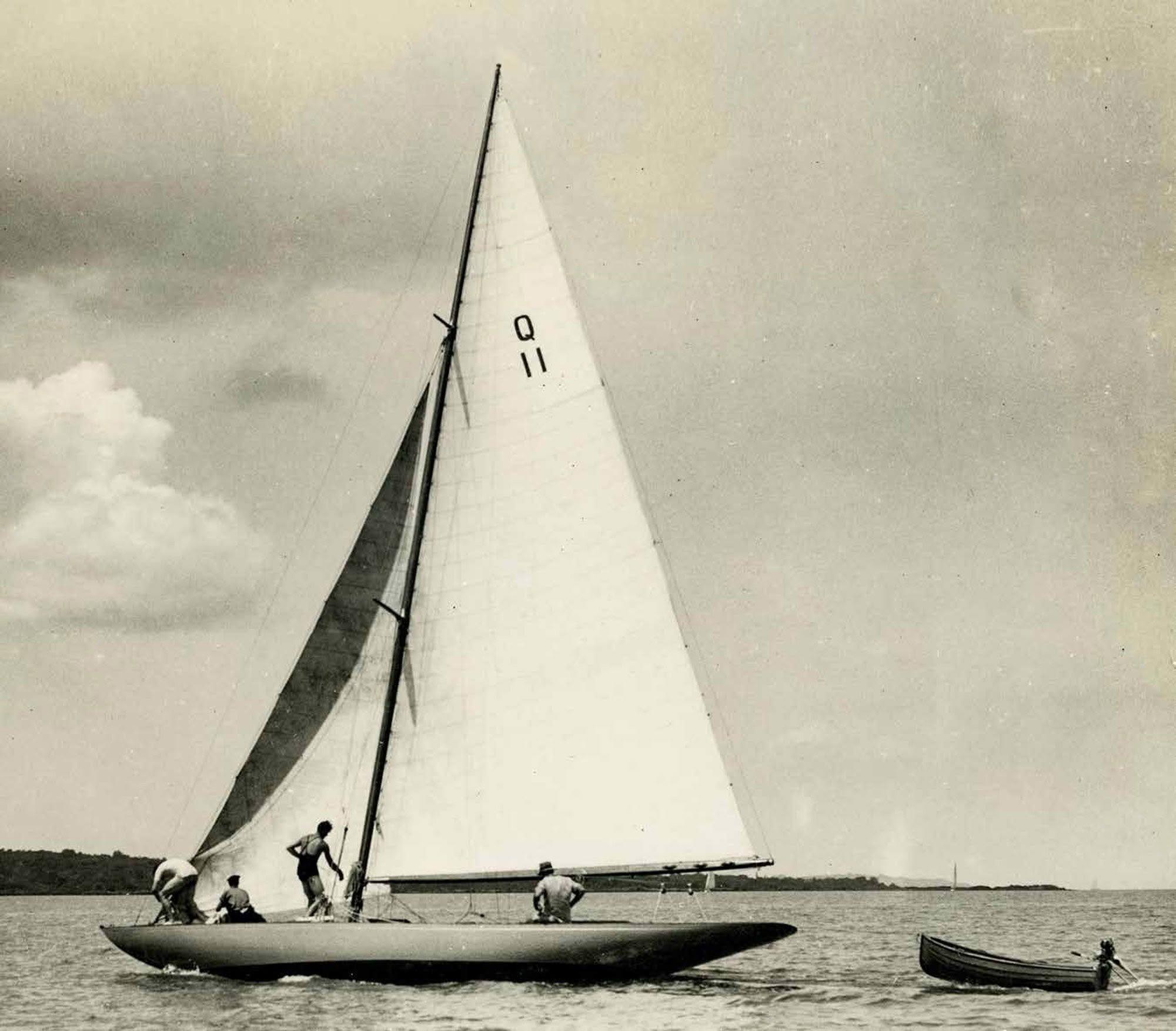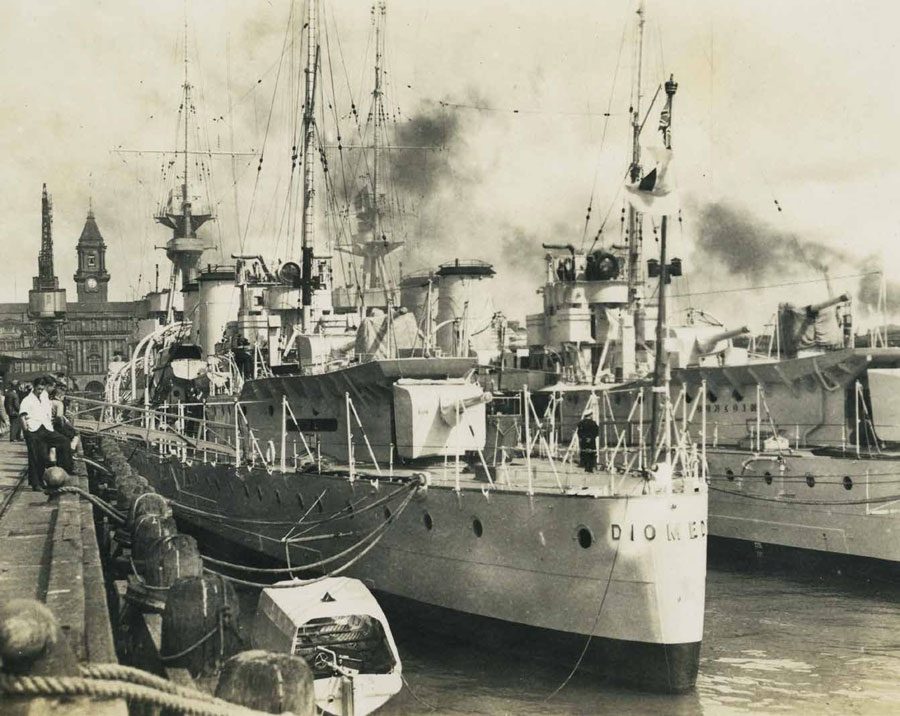

When he first arrived in Auckland on August 2, 1933 to join HMS Diomede the Auckland Star called Sub-Lieutenant Home (pronounced Hume by the way) Kidston “tall, good-natured, good-looking”. Its feature writer could have added “fabulously wealthy” to that description. His de Havilland Moth aeroplane and his Riley-engined Vosper Jolly Boat speedboat had arrived on the Rangitane with him. Yet to come were a Mercedes-Benz SSK sports car and a six-metre yacht, Bird O’ Freedom.
After Kidston’s dramatic part in the National Confidence Carnival in Wellington in November 1933 with his searchlight-dodging speedboat, Diomede proceeded to show the flag in Taranaki and South Island ports. In early October the Moth had been flown down to Wigram then on to Mosgiel for him – when Diomede visited Dunedin, he used her for two weekend fishing trips to Wanaka.
At this time the major newspapers had special sections dealing with local and international motoring and aviation news. Kidston was proving to be a godsend for circulation.
When he first arrived in August 1933 the newspapers reported that he was seeking advice from Phil Seabrook of Seabrook Fowlds, the Auckland Austin agents, on the type of racing car he should import. The papers wrongly stated that he had won the 1931 Shelsley Walsh Hillclimb in a Frazer-Nash. Indeed, it seems he merely told the newspapers that Seabrook had recommended he import a British 1,500cc car, like the Frazer-Nash. In the event he went much bigger; a 1930 SSK Mercedes-Benz, the fastest production car in the world at the time.
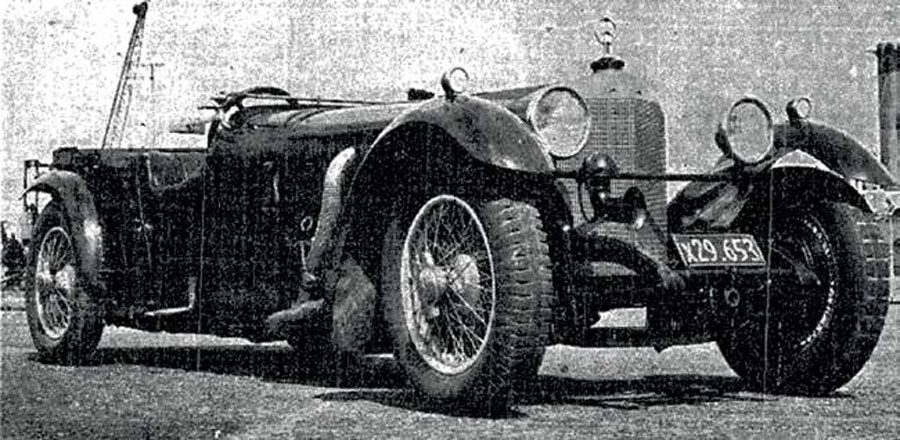
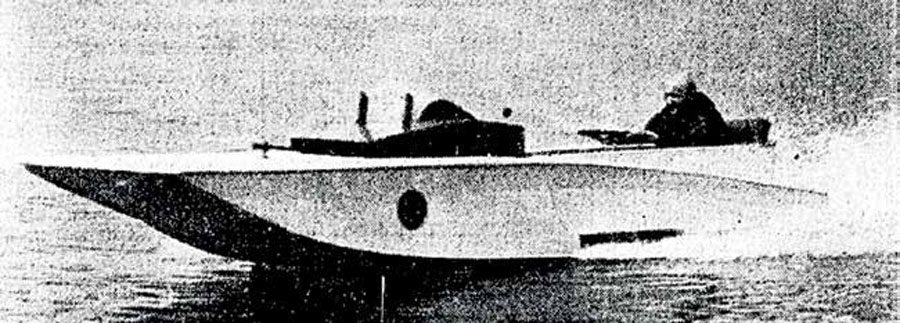
The New Zealand Herald of December 12, 1933 covered the arrival of Toy No. 3.
One of the finest sports motor-cars to be brought to the Dominion has arrived from London to the order of Sub-Lieutenant R. H. A. Kidston, of H.M.S. Diomede, and will be used for road work and beach racing… The car is a Mercedes-Benz sports four-seater, the chassis being of the highly successful SSK type, with a 36-220 supercharged six-cylinder engine. The machine is a 1930 model, and is capable of about 115 miles an hour in road trim, being one of the fastest stock model Mercedes types.
Although the Mercedes has been used for racing, it is in excellent condition, having been overhauled recently. In 1930 it was raced in the Ulster Tourist Trophy event by a private owner and is almost identical with the models with which the famous German driver, R. Caracciola, swept everything before him in Continental racing in 1930. Since the only two SSK ‘private owners’ at Ards had been Malcolm Campbell and Lord Howe the car’s provenance was outstanding.
Lord March of Goodwood had bought the car in London for Home Kidston and had it shipped to Auckland on Shaw, Savill & Albion’s RMS Tainui. Two other racing cars came with her, a Brooklands Riley for R.A. Dexter of Dexter & Crozier, the Riley agents, and a 4½-litre Bentley.


At the time, Kidston’s SSK Mercedes-Benz was a staggeringly impressive car, with its scarlet fabric-covered touring body, its three plated exhausts protruding from the right bonnet connecting to a huge tailpipe to the rear and with a supercharger that howled like a banshee when engaged. The SSK was the last car Ferdinand Porsche designed for Mercedes-Benz before he set up his own works.
Only a week later, on the evening of December 21, 1933, Kidston was charged with dangerous driving in Manurewa after getting away from a traffic inspector at an estimated 75mph on the Great South Road. The Otahuhu Magistrate treated it as a first offence and fined him £5 and costs.
In January 1934 Kidston took a fortnight’s leave to fish near Temuka. He stated that conditions in New Zealand were different to those at Home, as one fished up stream with a dry fly here, while in England one fished downstream with a wet fly. The New Zealand streams were gin clear, whereas most of them at Home were muddy. Finer tackle was necessary in fishing New Zealand waters, reported the Timaru Herald. He told the paper that he was “looking forward to some good sport among the swordfish at Russell before he rejoins his ship at Auckland.”
He drove the Mercedes-Benz south and scored a second traffic charge in Kaiapoi with her; there was more to come from this venture to the South Island. On January 10, 1934 he set out from Wellington for Auckland. It was a time when many drivers attempted inter-city records. The speed limit on open roads had been 30mph (48kph) since 1930 but had recently been relaxed. The trip was reported in the Auckland Star of January 11.
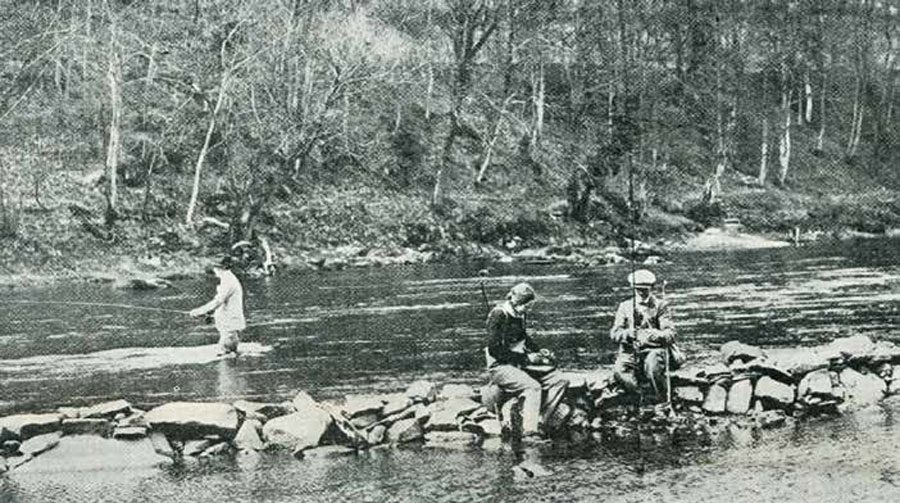
NAVAL MAN’S MOTOR TRIP
Sub-Lieutenant R. H. A. Kidston, of HMS Diomede, said when he arrived in Auckland from Wellington by motor car about 10 o’clock last evening that his trip was in no sense an attempt to break the record. He left Wellington about 9 o’clock yesterday morning in his super-charged Mercedes-Benz sports car, which he recently imported from England. ‘The fact that I was driving a fast car probably gave rise to the false impression that I was endeavouring to cover the distance in record time,” he said on arrival. “It was merely a normal holiday trip from Wellington to Auckland.” South of Wanganui the tread of one of the tyres stripped, and a stop was made for repairs. Another tyre was stripped near Waitara. On the way through Hawera the driver lost his way and followed the coastal road to New Plymouth. Some time was spent at Waitara working on the car. When passing through the Awakino Valley, south of Te Kuiti, the driver was unlucky enough to break a leaf in the offside rear spring. There were 30 gallons of benzine in the tank, and the back of the car bumped more heavily than usual. On his way towards Auckland on the Great South Road, Sub-Lieutenant Kidston was stopped by a traffic inspector, who said he had been sitting on a camp stool on the roadside with a packet of cigarettes since 7 o’clock waiting for the Mercedes to pass. After a short chat, the naval man carried on to Auckland. He had taken nearly 10 hours from Wanganui.
HMS Diomede then had exercises in the Hauraki Gulf with HMS Dunedin but both were back in Auckland for the Anniversary Regatta on January 29. Diomede was the flagship for the day. Kidston had entered his speedboat as Vosper Jolly Boat in the Speedboat race alongside Miss Howick, Miss Egypt, Mist Chief, Spot and Miss Ponsonby. Spot, first, and Mist Chief, second, were the only serious starters out of three. Spot, the fourth boat of that name, was an ugly single-step hydroplane built by Alf Williams of College Hill in 1932 with a ‘hot’ Continental four-cylinder engine out of a Rugby car. She had won the Masport Cup in 1932. Mist Chief was close to her in performance. Kidston probably had no show against these specialist racers but had to scratch the Vosper anyway as he was on duty on Diomede carrying out her flagship duties with the Governor-General Lord Bledisloe aboard.
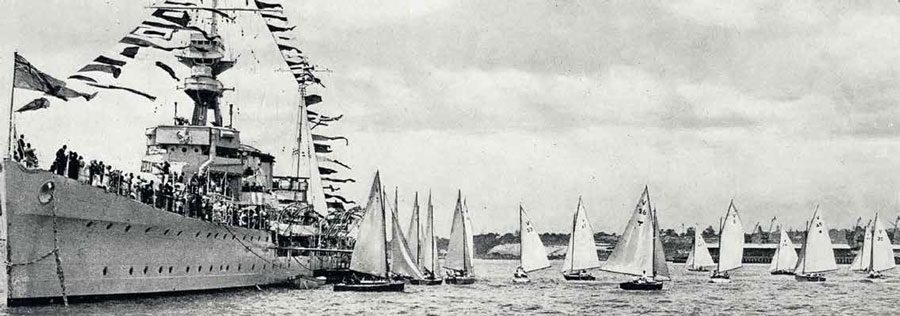
On February 7 Kidston was charged with dangerous driving in the Blenheim Magistrates Court. Kidston could not attend the hearing as Diomede was engaged in gunnery practice in the Hauraki Gulf and no leave was possible. Evidence was given that Kidston had been driving at an estimated 70mph on the Blenheim-Picton road on January 2, when the Mercedes went off the road twice in less than a mile. He was fined £20, had his licence cancelled and was disqualified for two years. The Magistrate described him as a “nautical road hog”.
Kidston appealed to the Supreme Court in Blenheim retaining a top Wellington counsel, W. Perry. After much argument and persuasive evidence by Kidston that he was well-qualified to handle the monster, the appeal was granted. The fine stood but the disqualification was removed. Mr Justice Reed opined that Kidston should scrap the Mercedes-Benz and “invest in a less tempting ordinary touring car.” The newspapers lapped up every word.
March 1934 came around. Kidston was now able to drive his Mercedes-Benz to the car races at Muriwai conducted by the Muriwai Motor Racing Club. The Auckland Star reported:
The Mercedes-Benz, which is one of the finest sports motor-cars in the Dominion, will take part in seven of the eight races… To provide greater interest for spectators, the laps have been reduced from a mile to half-a-mile.
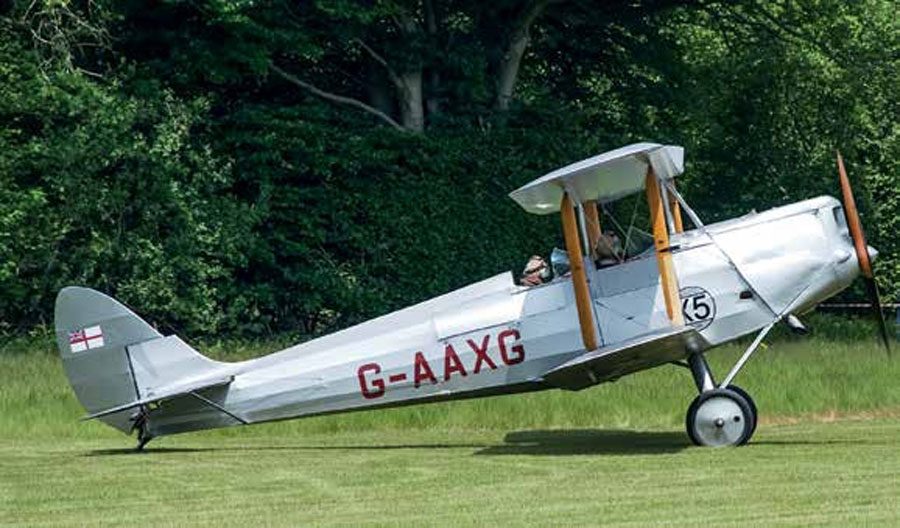
On scratch in all races, the seven-litre Mercedes-Benz was disadvantaged by the half-mile laps on the sand which favoured the lighter, nimbler cars like the Bugattis, Rileys and the supercharged Austin 7s. Kidston’s car proved to be unhappy on these short laps. He scratched her from all but three events but won the Acceleration test. The car started well in the main event, the New Zealand Beach Handicap, but damage to the gearbox in the Acceleration test left it with only three gears. The race was won by Edwards’ Bugatti.
Three months later the newspapers breathlessly announced that Sub-Lieutenant Home Kidston had entered his late brother’s Lockheed Vega in the Centenary Air Race from London to Melbourne. BNZ

